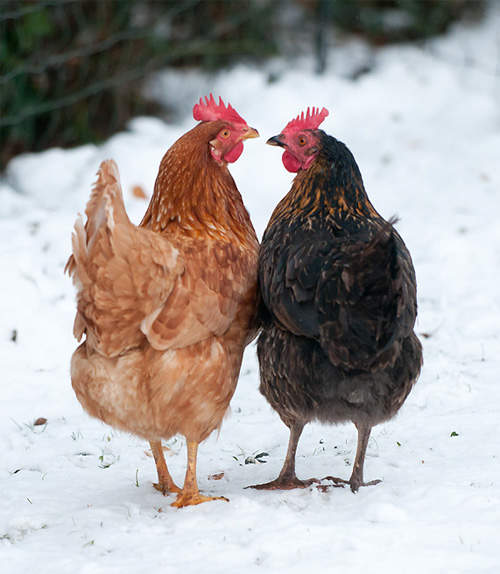I don't hate you, Williams-Sonoma. In fact, I think the face of Williams-Sonoma is supposed to be about reclaiming our Maker spirit with elegance, and I'm all about that. Back to our roots but with a modern, pretty twist? Yes. Regain confidence in our own self-sufficiency by rebuilding basic skill sets, but in an elevated, artisan way? YAAASS.
 |
| We call it Prairie Chic, bitches. |
Except the face of Williams-Sonoma, which seems from a distance to be dotted with sun-kissed freckles and fresh-flushed cheeks, is actually closer to the girls from the MAC store whose faces are so caked with industrial thickness spackle and artfully air-brushed blush-substrate.
 |
| No, I mean...it's fine. |
The problem with Williams-Sonoma is not that they purportedly give the everyday person access to the gourmet (if the everyday person is ready to pay $30 for their signature cupcake mix, which is full of the very best like, flour and, probably, gourmet baking soda, and definitely the same mineral terroir salt that Jacques Torres uses at his chocolate shop in Brooklyn). It's not even that they charge preposterous prices for what are essentially basic pantry essentials and gourmet candy (I am ashamed to say, in order to qualify for a 50% coupon, I bought a $6 teeny box of gourmet "old-fashioned" jelly beans, the cheapest thing in the store. There were literally one of each flavor inside). The problem is that, like my friend Martha Stewart, they actually undermine the everyday person's path to self-sufficiency. You can brew beer and make cider, but only with our kit. You can raise chickens but really only with a coop made from reclaimed antique barnwood and copper siding. Keep bees, but you'd better be willing to pay $1000 just to get started, and that doesn't include the bees. Garden, but with our high-tech patented soil substitute and cedar boxes. You can have a gourmet meal, if you order it from us.
This last one annoys me the most, particularly in the form of the Williams-Sonoma Christmas catalogue. The first one I ever saw was filled with things that were so impossibly expensive I couldn't even think about them, but looked and were described as so incredibly delicious I couldn't stop thinking about them. Crab cakes, homemade vanilla marshmallows, coconut creme sour cream cake, and peppermint bark in every shape, size and form. I pored over the catalogue fantasizing about the day I might be able to order a whole breakfast full of frozen pastries from some patisserie in Napa for Christmas brunch with some fantastic people who'd be stopping by with--what, artisan brew wassail?
| To these kick ass Napa Valley patisserie beggar's purses! YAAAAASSS! |
At a certain point, though, the description on the Williams-Sonoma catalogue for their signature peppermint bark started pissing me off. It literally says "Often copied, never matched in quality or flavor", right before it talks about using Guittard chocolate. Uh, they sell Guittard chocolate in Vons. Never matched in quality? Stop. That's not even the best quality chocolate *I* can buy. You're supposed to be the holy grail of cooking, WS. WTH.
This particular blurb "often copied, never matched in quality" to me is the antithesis of everything the urban farming movement stands for. I get that peppermint bark is the workhorse of the Williams-Sonoma winter retail season and we have to feel that what we're getting is much more than just the WS logo on a fancy tin. But for a company to say to their specific customer, who is, by their very nature, a budding chef or cook, at whatever level, that you have a product they will NEVER match in quality, when that product is, without hyperbole, two candy bars and a smashed candy cane? What kind of message is that? "You can do it yourself! Unless we sell it. Then please don't even try you stupid lump you will NEVER, NEVER get this right."
No, no, no. I may covet your tart cherry shea butter gardener's soap, WS, but I will never, NEVER buy something that scoffs at my attempt to do better.
I mean...I obviously had to buy one tin for taste comparison's sake so that I could fully exult in my victory once I had crushed the Original Peppermint Bark under my metaphorical heel. But I think we can all agree that said purchase would be purely for both science and pettiness and not at all a bending of said principle.
Game on, kids.
I started reading about what the real chocolatiers said about the best chocolates, and found out what they liked (Valrhona and Callebaut) and took a good hard look at the Holy Bark. It kind of looked like chocolate and white chocolate and candy canes. $40 for a candy bar sandwich and a smashed candy cane? Can't be that easy. I looked back at the catalogue to see if their famous descriptions could betray their ingredients and realized this was a recipe I could figure out myself. Oh, you infuse your chocolate with peppermint essence? Is that at all like peppermint extract? Yeah. I broke your code. I'll see your peppermint extract and raise you a tsp of pure vanilla. NOW WHO'S NEVER MATCHED IN FLAVOR. See my peppermint bark recipe here.
New quest: dismantle the Williams-Sonoma catalogue one deconstructed recipe at a time.
I loved the description of their Coconut Creme Cake with marshmallow frosting and sour cream filling made my mouth water. It sounded a lot like a basic tiramisu I had made before--essentially a dense cake, soaked in flavoring, filled with cream in layers. I loved the mascarpone cream I used for tiramisu, and I thought mascarpone and sour cream might not be that different in density, so I tried substituting one for the other and adding a bit of coconut creme syrup from the liquor section. I found a coconut cake recipe (courtesy Paula Deen, pre-political suicide), sliced it, soaked it with coconut syrup like the catalogue said, and put on a basic marshmallow frosting (on the back of the light corn syrup bottle) and sprinkled it with coconut. Everyone in my family protested that they didn't like coconut and yet somehow the entire cake was gone by the time I had my second piece. See my kick-ass coconut sour creme marshmallow cake recipe here.
I love the William's-Sonoma catalogue--used responsibly. I think it's full of inspiration if we empower ourselves to do cool stuff in modern, interesting, elegant ways. There's nothing wrong with ordering a $90 pre-cooked turkey delivered to your door, or a beautifully decorated spice cake, or even a $40 stripey tin of the famous, Original WS Peppermint Bark with Guittard chocolate. But as my favorite food writer, Anthony Bourdain, says in his book "Medium Raw", no one else will ever put the care and quality of ingredients into your food that you would yourself.
Tonight, I went to make my Christmas chocolate raspberry tiramisu and realized I was out of raspberries, and empowered by taking on the Evil Empire and their Christmas catalogue, I decided to try something else with what I had on hand. Find the link to my full recipe here. Chocolate cherry Baileys and some cherries in the freezer, a couple of fresh Meyer lemons from my tree--I modified my raspberry sauce to use cherries. When it didn't taste as fresh as I wanted it to, I adjusted for sugar and added more lemon for brightness and acidity, then I soaked my chocolate pound cake with coffee and chocolate cherry Baileys, layered it with fresh cherry sauce and mascarpone cream and stole a bite before it put it in the fridge to chill.
Good god. Sometimes I want to call out my own name when I'm cooking.
Now, to figure out how to make a pair of DIY candy cane stilettos...












